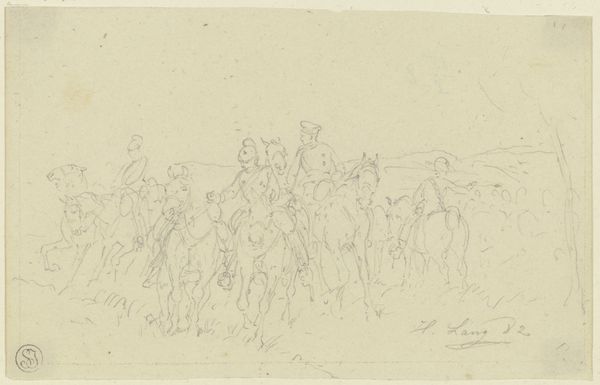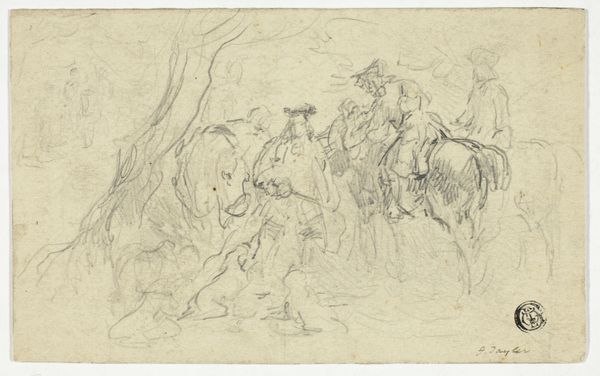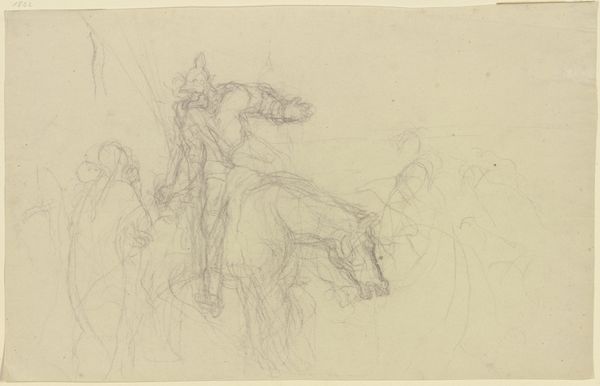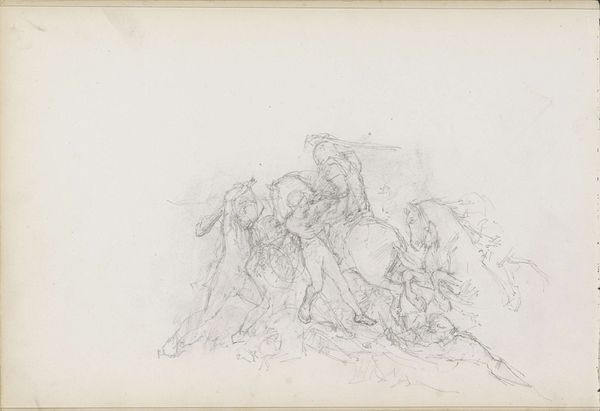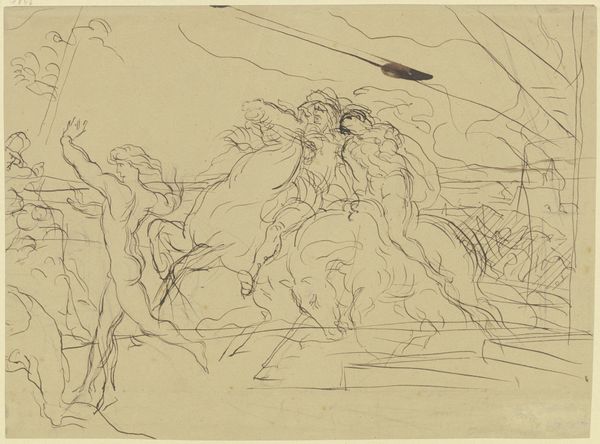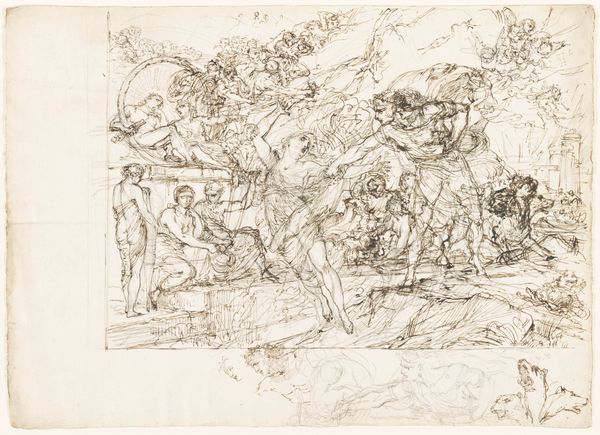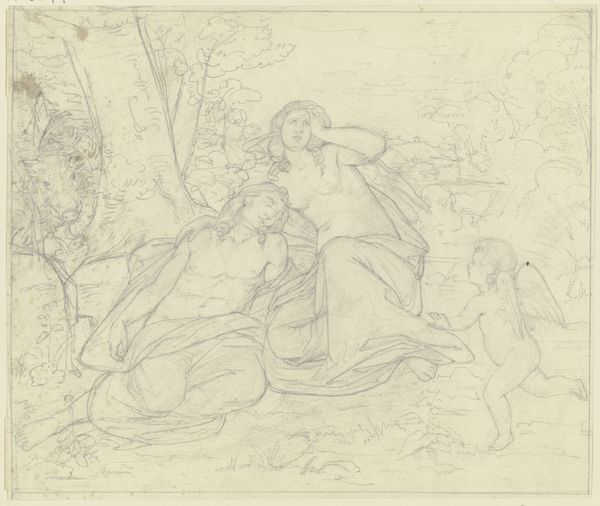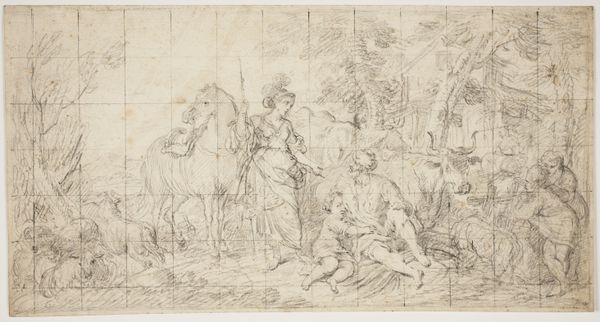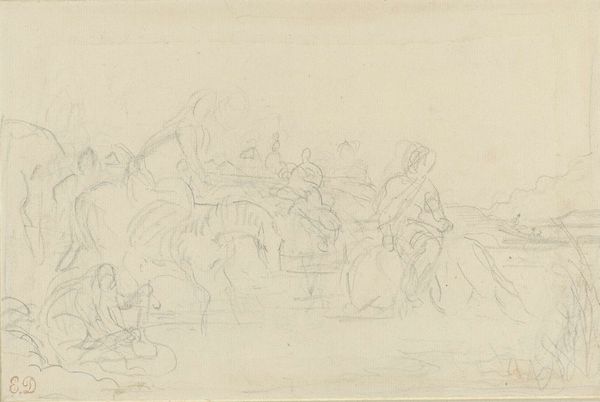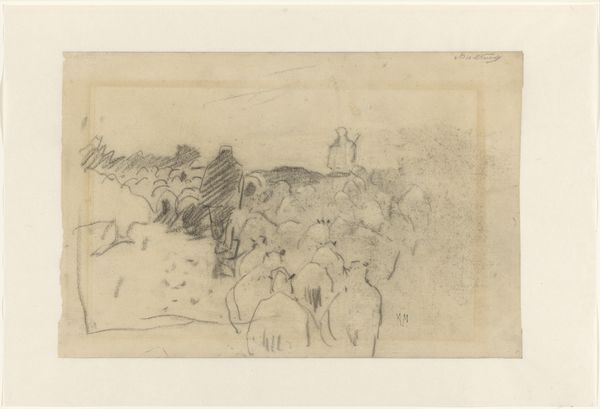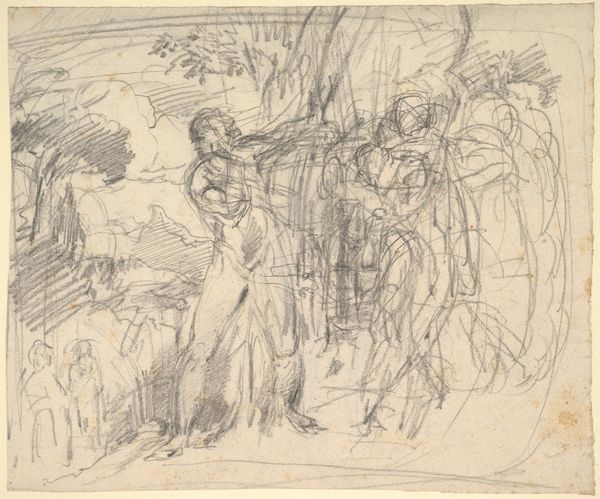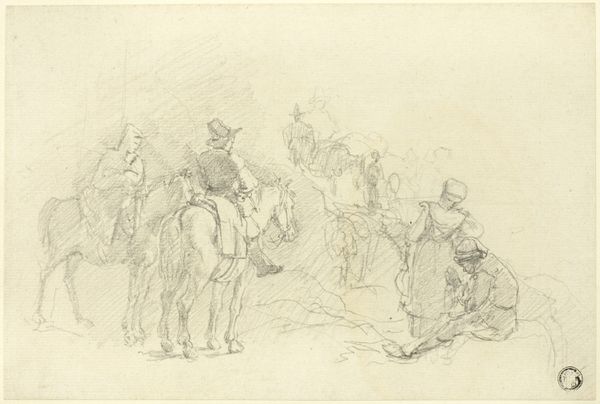
drawing, paper, ink, pencil, pastel
#
drawing
#
16_19th-century
#
narrative-art
#
pencil sketch
#
figuration
#
paper
#
ink
#
pencil
#
pastel
#
academic-art
Copyright: Public Domain
Editor: Here we have Wilhelm Altheim’s “Three Drunken Centaurs,” created in 1889 using pencil, ink, and pastel on paper. It has a kind of frenetic energy, doesn't it? A real sense of drunken revelry... What jumps out at you when you look at this sketch? Curator: The centaur, a potent symbol merging human intellect and animal instinct, is here stripped of its heroic associations and exposed inebriated. Consider how the symbol has devolved – from noble creature to a being consumed by base desires. Why do you think Altheim chose to portray them this way? Editor: Maybe to challenge the idealized versions we often see in art history? Is he commenting on human nature itself, the animalistic side we try to keep hidden? Curator: Precisely. Look at the unfinished figures hovering in the background. They seem to represent the repressed potential, the figures the centaurs could have been before succumbing to indulgence. See how the artist uses shadow and light? Do these add a specific narrative to it, maybe regarding the internal struggle of man? Editor: Yes, the contrast really emphasizes the struggle – the light highlighting their physicality, the shadow suggesting a loss of control, almost a fall from grace. I am not so sure it fits within the visual traditions of the time... Curator: Indeed, it is also reminiscent of the Bacchanalian feasts in Roman art, connecting those celebrations with loss of temperance and humanity. In its rawness and sketch-like state we gain insight into humanity’s moral struggle over temptation. What remains today of those centaurs in terms of visual symbols? Editor: The way Altheim strips away the grandeur and leaves behind vulnerability. That certainly feels relevant today, reminding us of the dangers of excess and the importance of balance. Curator: A valuable interpretation. It seems Altheim used classical figures to reflect our ongoing and often fraught relationship with our own inner selves.
Comments
No comments
Be the first to comment and join the conversation on the ultimate creative platform.
